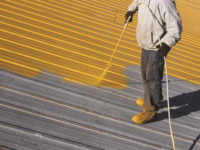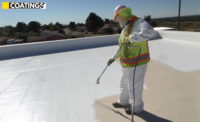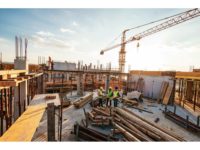Advances in technology and the increased importance to improve efficiency while providing sustainable roofing solutions at a lower cost to customers has brought about a new era in coatings applications. Dan Quinonez, executive director of the Roof Coatings Manufacturers Association (RCMA), and Chadwick Collins, director of the technical services, recently answered the following from RC.
Q: Describe the current state of the roof coatings market in the U.S.?
A: The current state of the market is good and while the size of the market has grown, we have seen a slight shift in the mix within the market. Silicone and polyurethanes have really gained traction from their position a few decades ago. Thanks to the overall growth of the market, other coatings such as acrylics, aluminized, and emulsions, continue to be major players.
The approach to coatings has changed drastically. Whereas a coating may have been viewed as a short-term solution in the past, coatings now enjoy a position as enhancement to a new or current roofing system due to the performance properties a coating brings to the roof.
Q: Is the recent spike in applications sustainable?
A: We are very proud of the growth of not only the market, but the acceptance of roof coatings as a viable option by those that select and those that install our products. The flexibility and options that roof coatings provide contractor and ultimately, building owner, has a value that the market has responded well to and we see continuing in the future.
Q: How have coatings applications evolved to be more environmentally friendly?
A: First, let’s talk about the roof. A coating can help extend the life of a current roofing system. An extended life mean a delay of disposal. What develops in that extended timeline? Perhaps more recycling options become available in that market, new technology is introduced that extends the roof even further – we never know what will happen. But an extended roof life allows for that possibility rather than the existing material being disposed to a landfill.
Specifically, more products today have lower VOCs and the industry continues to push those limits lower. Many building owners also select coatings for their reflectivity, which can assist in energy consumption, especially at peak loading.
Q: Are coatings safer to use today?
A: Safety training and equipment has evolved, not just for roof coatings, but also for roofing in general a great deal. With the internet, everyone has access to the proper safety data sheets for any product. The harmonization of these documents across many sectors has helped simplify the communication for the installer to review and understand what equipment is needed and when. Finally, working a roof, whether installing roof coating or any other product, continues to carry the hazards of falls and heat-related risks. We always advocate that anyone installing products should be trained and follow the proper practices needed to be safe on a roof.
Q: What are you excited about for the future of this segment of the roofing industry and how big can it get?
A: The future of this segment is always exciting. We continue to expect growth. Our products inherently offer features that other products do not and we see no shortage of the need for these features down the road. Now, just looking to the past few decades, we know that the mix of products in our segment will likely change, new technologies and families of products will be introduced, but roof coatings as a segment will not go away.



